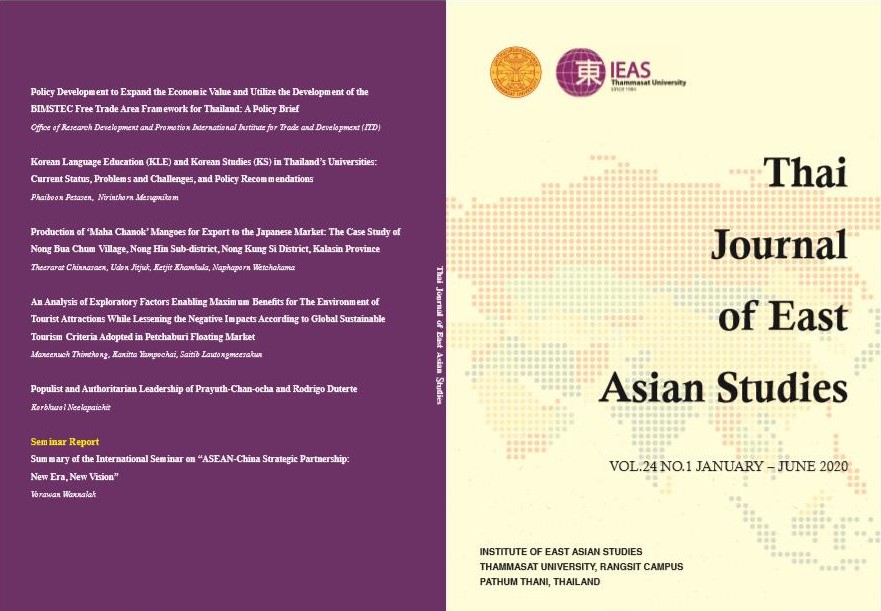Policy Development to Expand the Economic Value and Utilize the Development of the BIMSTEC Free Trade Area Framework for Thailand: A Policy Brief
Keywords:
BIMSTEC, Free Trade Area, South Asia, Southeast AsiaAbstract
This research was carried out by the International Institute for Trade and Development (Public Organization). It examines the BIMSTEC Free Trade Area Framework by analyzing economic, political and social factors. The research reveals that BIMSTEC clearly brings geographic, economic, and social benefits to member states, but insufficient progress has been achieved since it endeavors to cover 14 major sectors. Such an excessive area of cooperation makes agreement and action difficult. Also, differences in political system and political culture among the member states require time for adjustment to increase cooperation and has delayed the free trade area framework negotiations. At present, the member states have been able to conclude only three agreements, including the Agreement on Trade in Goods, Agreement on Cooperation and Mutual Assistance in Customs Matters, and Agreement on Dispute Settlement Procedures and Mechanisms. Other negotiations on investment, trade, and trade facilitation agreements are still pending.
Nevertheless, BIMSTEC remains significant for trade, investment, and formulating strategy for Thailand’s international relations. This research presents approaches to developing a BIMSTEC policy aimed at expanding its economic value in terms of trade and investment utilizing national competitive enhancement approaches for both government and private sectors. It is hoped that this will lead to greater cooperation and connectivity in various dimensions in parallel with economic and social development for all BIMSTEC members.



